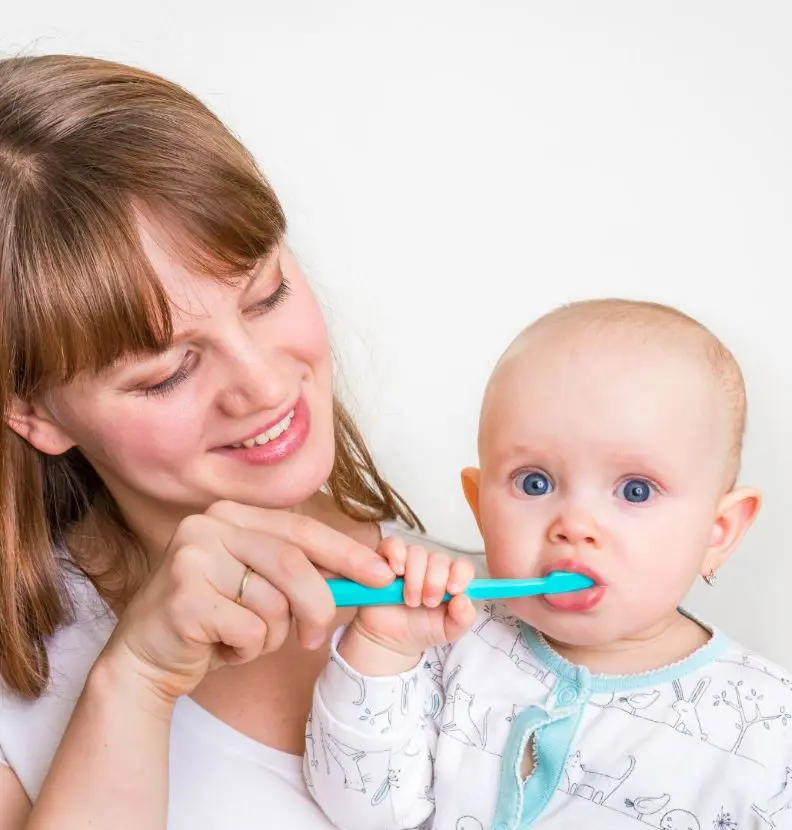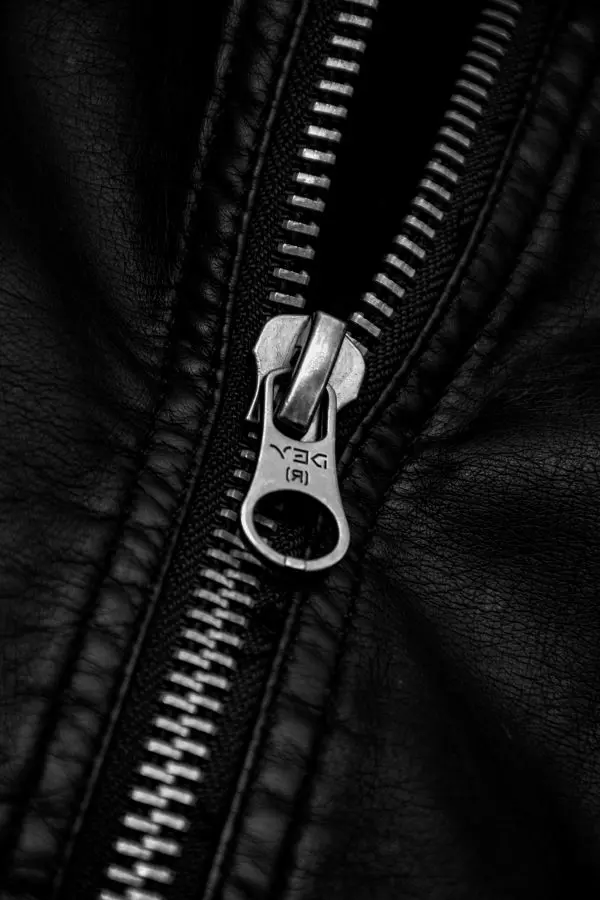Baby Teeth Order Of Appearance

Every parent cherishes the moment their baby's first tiny white teeth emerge, brightening their contagious smile. Beyond enhancing their charm, these baby teeth mark a crucial development milestone, laying the foundation for healthy oral habits.
This article delves into the order of baby teeth eruption, their timeline, and essential teething and dental care tips every parent should know, ensuring a smoother experience for both the baby and the family.
What Are Baby Teeth?
Some people call them primary teeth, deciduous teeth, or milk teeth- baby teeth are the first set of teeth that children develop. These temporary teeth play a vital role in every child's oral development because they help them by providing:
- Chewing and nutrition: They help babies eat solid foods as they grow.
- Speech development: They assist in forming sounds and words.
- Jaw growth: They guide the proper alignment of permanent teeth.
- Aesthetic role: They contribute to your baby's smile and facial structure.
Remember, a full set of baby teeth has 20 teeth- 10 on top and 10 on the bottom. Permanent teeth will later replace these baby teeth as your child grows.
When Do Baby Teeth Erupt?
In a nutshell, teething occurs at around six to eight months of age, though, if your baby's teeth do not show between these months don't stress. In some infants teething starts as early as four months of age while in other children it may take up up to one year and even more. The process differs from one child to the other depending on the child's genetic build and development patterns. At the age of 3 years, a child should have all twenty baby teeth.
Factors Influencing Tooth Eruption
Several factors can influence when and how baby teeth appear:
- Genetics: Family history plays a significant role in tooth development timing.
- Nutrition: A balanced diet supports healthy tooth development.
- Overall Health: Medical conditions can impact tooth emergence.
- Gender: Girls tend to get teeth slightly earlier than boys.
The Order Of Baby Teeth Appearance

While every child is unique, there's a general sequence and approximate age range for tooth emergence. Here is a detailed breakdown of the typical order of appearance:
1. Central Incisors (Front Teeth)
Central incisors are the two front teeth which you can see in the upper and lower jaws. These are the first ones that develop in infancy; it is an essential stage in the dental growth of a child. In other words, those are the first teeth your baby will ever have in his or her life to use in chewing soft foods.
- Lower Central Incisors: These teeth develop between 6-10 months of age. Most children's lower central incisors grow around 6 to 8 months.
- Upper Central Incisors: Grow slightly later, generally between 8 to 12 months.
2. Lateral Incisors
We can call a baby's lateral incisors "followers" of the central incisors because they develop right next to them, completing a sequence. Plus, these teeth help expand the biting surface, making it easier for your baby to eat. Let's take a closer look at when the lateral incisors typically emerge.
- Upper Lateral Incisors: These typically appear between 9 to 13 months of age. They are located next to the central incisors at the front of the mouth.
- Lower Lateral Incisors: These usually arise a bit later, between 10 to 16 months of age, positioned next to the lower central incisors.
3. First Molars
The first molars are bigger teeth found at the back of the mouth, with two in the upper part and two in the lower part. They are bigger than other baby teeth and have a wide, thick surface meant for crushing food.
- Upper First Molars: Typically emerge between 13 to 19 months.
- Lower First Molars: Usually appear a bit later, between 14 to 18 months.
This eruption pattern means that by around 2 years of age, most children will have their first molars in place, contributing to a full set of primary teeth.
4. Canines (Cupsids)
Canines, also known as cuspids found next to the lateral incisors. There are four canines in total: two on the upper jaw (maxillary) and two on the lower jaw (mandibular). Their sharp, pointed shape is designed for tearing food, especially tougher items like meat. They also assist in guiding the jaw during chewing and play a part in maintaining the overall alignment of the teeth.
- Upper Canines: These typically emerge between 16 to 22 months of age.
- Lower Canines: These usually appear slightly later between 17 to 23 months.
This means that by around 2 years of age, most children will have their canines in place, contributing to their complete set of primary teeth.
5. Second Molars
The second molars, commonly called the "two-year molars," are a key part of a child's baby teeth. These molars are found at the very back of the mouth, right next to the first molars and behind the canines. There are two on the top jaw and two on the bottom jaw. These teeth are larger than others (same as first molars). The function of the first and second molars is the same.
- Upper Second Molars: Typically emerge between 25 to 33 months.
- Lower Second Molars: Usually appear slightly earlier, between 23 to 31 months.
This timing means that most children will have their second molars by the time they are around 2 to 3 years old.
Important Notice
Not every baby's teeth will emerge in the same order as previously discussed. Some babies may get their lateral incisors first, or even other teeth. This variation is completely normal and does not indicate that your baby is unhealthy, according to Healthline. So, don't stress if this happens- just enjoy your baby's teething days!
Common Symptoms Of Teething

The process of teething can be especially difficult for the baby as well as the parents. Your baby can get uncomfortable, annoyed, or frustrated on a daily basis, which is so hard to watch for parents. Some common symptoms that your baby may show are:
- Drooling
- Swollen Gums
- Fussiness and Irritability
- Chewing and Gnawing
- Changes in Eating Patterns
- Slight Fever
- Rubbing Cheeks or Pulling Ears
- Sleep Disruptions
- Coughing or Gagging
When to Seek Medical Advice
Though teething is associated with several symptoms, parents should be aware to distinguish between the normal teething signs and signs of illness. Is your baby experiencing any of the following situations? Watch it: fever above 100.4 degrees F, vomiting, or extreme crankiness that lasts longer than usual, it's best to consult a pediatrician. These symptoms are not associated with the teething process and may be a sign of other health problems. So, don't delay to visit your pediatrician.
How to Soothe?

Here are some effective ways to soothe a teething baby and help ease their discomfort:
- Cold Teething Toys: Teething toys that are chilled can provide relief. Look for a solid rubber toy that can be placed in the fridge. Avoid freezing them, as overly cold toys can hurt your baby's gums. Let your baby chew on these toys to help numb the pain.
- Chilled Washcloth: A simple and effective remedy is a cool washcloth. Wet a clean washcloth, wring it out, and place it in the refrigerator for a while. Once it's cool, give it to your baby to chew on. The coolness will soothe their sore gums.
- Chilled Fruit: If your baby has begun eating solids (usually around 6 months), you can offer chilled, soft fruits like mashed bananas or applesauce. These not only taste good but also provide relief for sore gums.
- Gum Massage: Gently massaging your baby's gums with a clean finger can help relieve discomfort. Use your finger to apply gentle pressure in a circular motion on the swollen areas of their gums.
- Cool Metal Spoon: Another household item that can help is a cool metal spoon. Place a small spoon in the fridge, and once it's cool, you can gently rub the curved side against your baby's gums for comfort.
- Warm Bath: Sometimes, a warm bath can help relax your baby and distract them from teething pain. The warm water can be gentle and provide comfort during this uncomfortable time.
- Cuddles and Comfort: Never underestimate the power of cuddling! Holding your baby close and providing extra comfort can help them feel secure and loved, which is especially important when they're feeling fussy.
- Managing Drool: Teething often leads to excessive drooling, which can cause rashes around the mouth and chin. Keep your baby's face dry by gently wiping away drool with a soft cloth and using bibs to protect their clothes.
- Pain Relief Medication: If your baby seems very uncomfortable, you might consider giving them an age-appropriate pain reliever like paracetamol or ibuprofen after consulting with your pediatrician. Always follow the dosage instructions carefully.
Caring For Baby Teeth

Many parents used to neglect their baby's dental care, believing milk teeth didn't require attention since they would eventually be replaced by permanent teeth. However, they play a crucial role in the dental health of a child. Here are some tips for caring for them.
- Start Early: Start wiping the baby's gums with a soft cloth before they develop their first tooth. Once teeth come in, start using a small toothbrush and use only water.
- Use Fluride Toothpaste: After age two, introduce fluoride toothpaste but ensure that your child does not swallow it.
- Limit Sugary Foods: Reduce sugary snacks and drinks to prevent cavities.
- Regular Dental Visits: Schedule your child's first dental visit by their first birthday or when their first tooth appears.
- Avoid putting babies to bed with bottles
When to Consult a Pediatric Dentist
While variations are normal, consider consulting a dentist if:
- No teeth have appeared by 18 months
- Teeth are emerging in an unusual order
- There are signs of significant discomfort or complications
The Transition to Permanent Teeth
Baby teeth don't last forever. Permanent teeth gradually replace the baby teeth following a similar pattern of emergence. Let's see when those teeth start to fall:
1. Central Incisors
Children typically begin to lose their baby teeth around the age of 6 years, starting with the central incisors. The shedding process follows a general timeline where:
- Lower Central Incisors: Usually fall out between 6 to 7 years.
- Upper Central Incisors: Follow suit, also falling out around the same age range.
2. Lateral Incisors
- Upper Lateral Incisors: Usually fall out between 7 to 8 years.
- Lower Lateral Incisors: These usually loosen up later than the upper lateral incisors at the same age range.
3. First Molars
First molars are generally lost between 9 to 11 years of age as permanent teeth start to come in.
4. Canines
Canines usually begin to fall between 10 to 12 years of age.
5. Second Molars
Children normally lose their second molars between the ages of 10 and 12.





